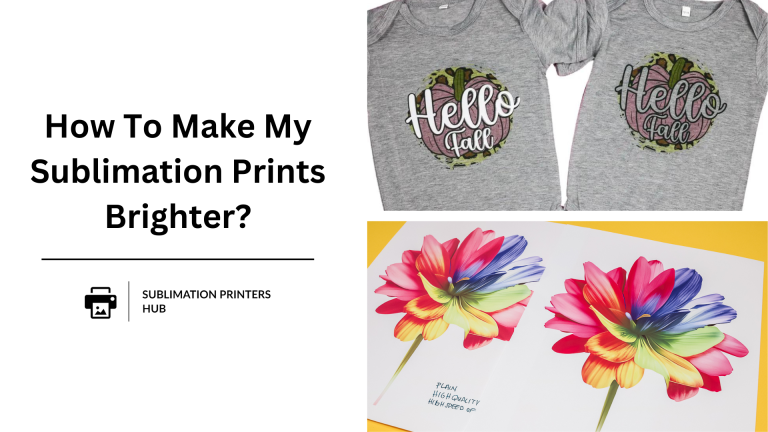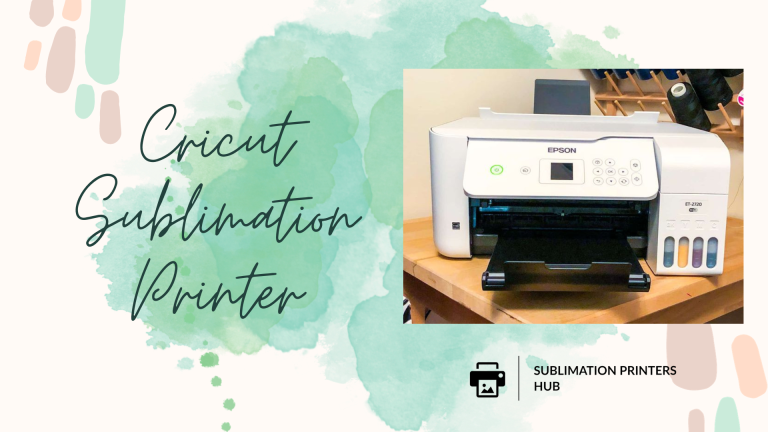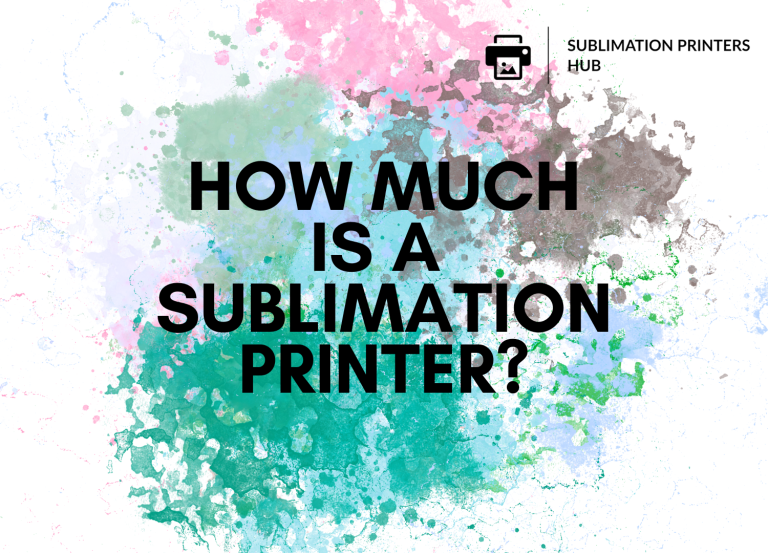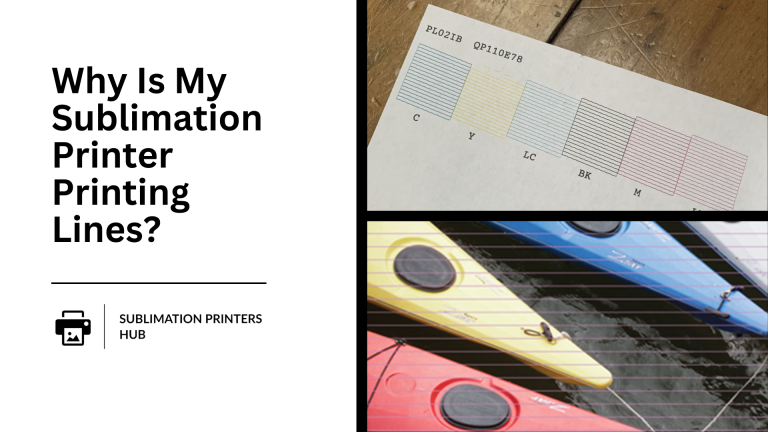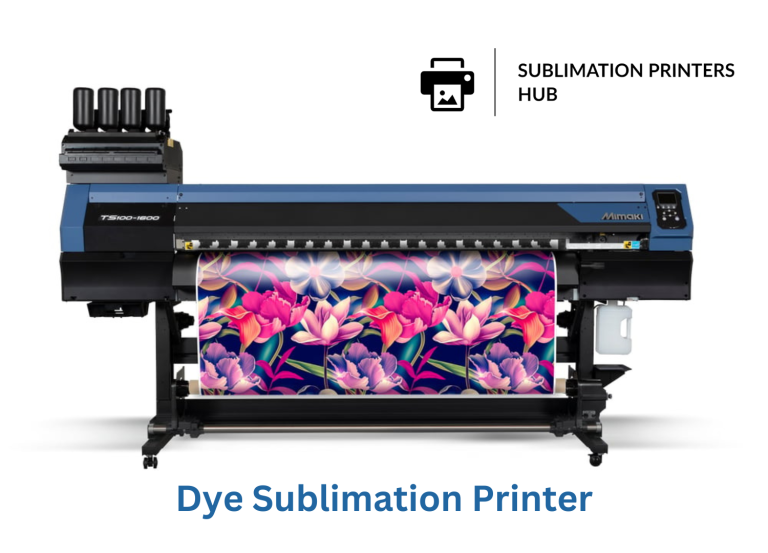One of the most frequently asked concerns concerning sublimation printing is if you can turn a standard consumer inkjet printer into a sublimation printer. The quick answer is that most consumer Epson printers can be converted to sublimation printing with a few changes. In this detailed guide, we’ll go over everything you need to know to convert an Epson printer to sublimation.
Sublimation printing is a popular and versatile printing technology that allows you to print full-color images and pictures on a variety of substrates, including polyester fabrics, ceramics, metals, and more. The sublimation method employs heat to transfer dye onto the substrate, allowing the ink to become a part of the material being printed on rather than simply sitting on the surface. This results in prints that are extremely vivid, long-lasting, and sturdy.
Convert Epson EcoTank Inkjet Printer To Sublimation
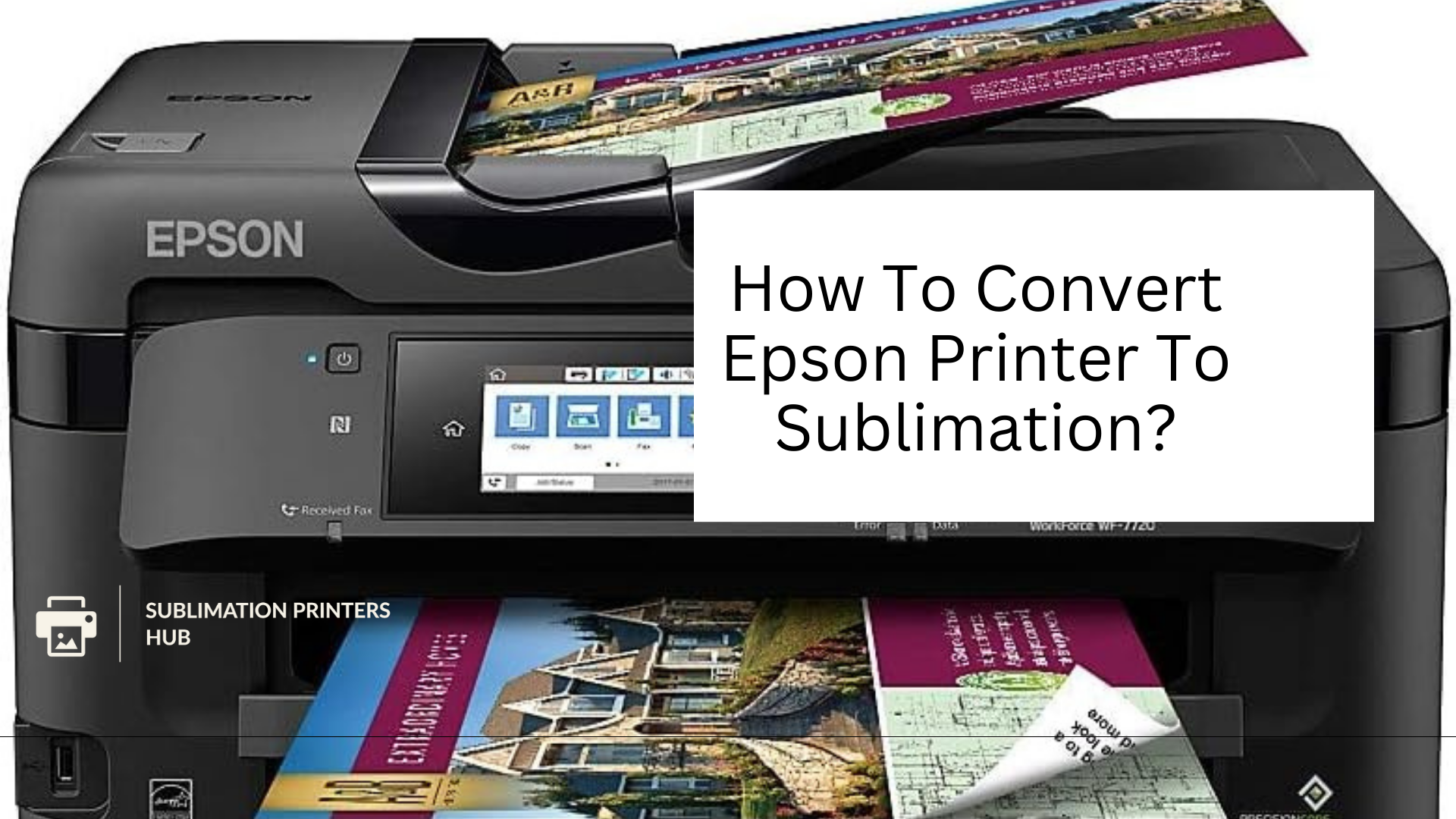
Process of Converting Epson Printer To sublimation Printer:
1) Choosing the Right Epson Printer Model:
The first step is to choose the appropriate Epson printer model to convert to sublimation. Here are a few things to remember:
> Inkjet technology requires an inkjet printer: Epson offers both inkjet and laser printers, however only inkjet machines can be converted to sublimation. This is because the sublimation procedure uses liquid sublimation inks only.
> Ink cartridges: The printer must use a separate ink cartridge for each color. Printers with integrated print heads that do not support user-replaceable inks are incompatible.
> Print size: Select a model that can print to the size you require. Standard 8.5″ x 11″ prints or larger (e.g. 11″ x 17″) are recommended.
> Print head: Permanent print heads are superior to disposable print heads. Permanent print heads are designed to withstand many cartridge replacements and hard use.
Reviews: Read the reviews to learn if others have successfully converted that Epson model to sublimation. This can help to determine compatibility.
Some of the most regularly converted Epson models are:
– Epson WorkForce WF-7710 or WF-7720
– Epson XP-830 or Epson XP-860
– Epson XP-640 or XP-860
2) Buying Sublimation Ink:

Once you’ve decided on an Epson printer model, the following step is to buy sublimation ink. You will need to purchase sublimation ink cartridges manufactured specifically for your printer model. Here are some tips for purchasing ink:
» Brands: Look for respected sublimation ink brands such as Sawgrass, Cosmos, InkOwl, and Cobra. Avoid generic inks that have no name.
» Color choices: You can use CMYK (cyan, magenta, yellow, black) ink cartridges or more expansive alternatives such as CMYKOGBK (cyan, magenta, yellow, black, orange, green, blue, black) to achieve a wider color gamut with brighter and more intense colors.
» Volume: Buy larger cartridge volumes (80ml or more) to save money on ink. You’ll go through it faster than normal ink.
» Chip resetters: You may need to buy “chip resetters” for your cartridges to reset the ink level tracking on the chips. This allows you to refill cartridges instead than purchasing new ones.
Make sure to get enough ink to cover your projected monthly print output. Sublimation ink often provides 20-30% less pages than conventional ink cartridges.
3) Installing The Sublimation Ink:
Once your sublimation ink comes, you can install it into your converted Epson printer using the following steps:
1. Open your printer and locate the ink cartridge compartments.
2. Remove any remaining original manufacturer cartridges.
3. Unpack your sublimation ink cartridges, removing any tape or wrapping.
4. Gently shake the sublimation cartridges back and forth to distribute the ink within. This helps to prevent blockages.
5. Place the sublimation cartridges in the appropriate color bays, matching the ink color labels. Push forcefully until the cartridges click into place.
6. For cartridge chip models, attach the resetter tool to reset the ink level before refilling.
7. Close the printer and perform 1-2 initial ink charging and cleaning cycles as directed to prepare the ink system.
8. Prior to printing your sublimation designs, print a test page to ensure quality and color rendition.
If you notice any problems like as missing colors, faint prints, or banding, you may need to perform extra head cleanings or replace the cartridges. However, after prepared with sublimation ink, your converted Epson printer will be ready for sublimation printing. To avoid clogging, make sure to use it on a regular basis.
4) Setting Printer Settings For Sublimation:
To enhance print quality, you will need to alter a few key parameters in your printer driver software:
→ Print Quality: Select the highest possible print quality and resolution. Sublimation normally requires at least 5760 x 1440 dpi.
→ Ink/Toner: For bright colors, use the darkest ink density and 100% coverage.
→ Media Type: Set the media type to match the paper you’re printing on. Options such as “Premium Photo Paper” and “Ultra Premium Photo Paper” are common.
→ Color Management: Disable all color correction, photo enhancement, and RBG to CMYK conversion capabilities. Allow the printer to emit true RGB color.
→ Paper Size: Select the size that corresponds to the dimensions of the material you are using.
→ Alignment: Always print a test alignment sheet first to ensure the print head is properly aligned.
→ Color Matching: Print a color palette page and adjust the RGB levels if the colors appear off.
These easy changes will allow you to get the most precise and vivid results from a converted sublimation printer utilizing specialized inks.
5) Choosing Your Sublimation Media
Sublimation designs require particular blanks and substrates to be printed on. Here are the most popular choices:
Polyester textiles: Select 100% polyester fabrics. Poly-cotton blends will not work. Common textiles include poplin, satin, and chiffon.
Wood: Real wood substrates must be coated prior to sublimation printing. MDF board is a typical choice.
Coated ceramics: Polymer coatings can be applied to mugs, plates, bowls, ceramic tiles, and other items to allow them to take sublimation dyes.
Polymer stickers/magnets: Polymer-based stickers, badges, and magnets are ideal for little sublimation objects.
Aluminum: Pre-coated aluminum blanks are available for printing on drinkware such as water bottles, flasks, and tumblers.
Synthetic boards: Acrylic, plastic, and poly boards are all viable options.
To ensure proper sublimation, utilize surfaces that can withstand high heat (at least 400 degrees Fahrenheit). Test different blanks until you get the best prints for your specific tasks.
6) Pressing Your Prints:
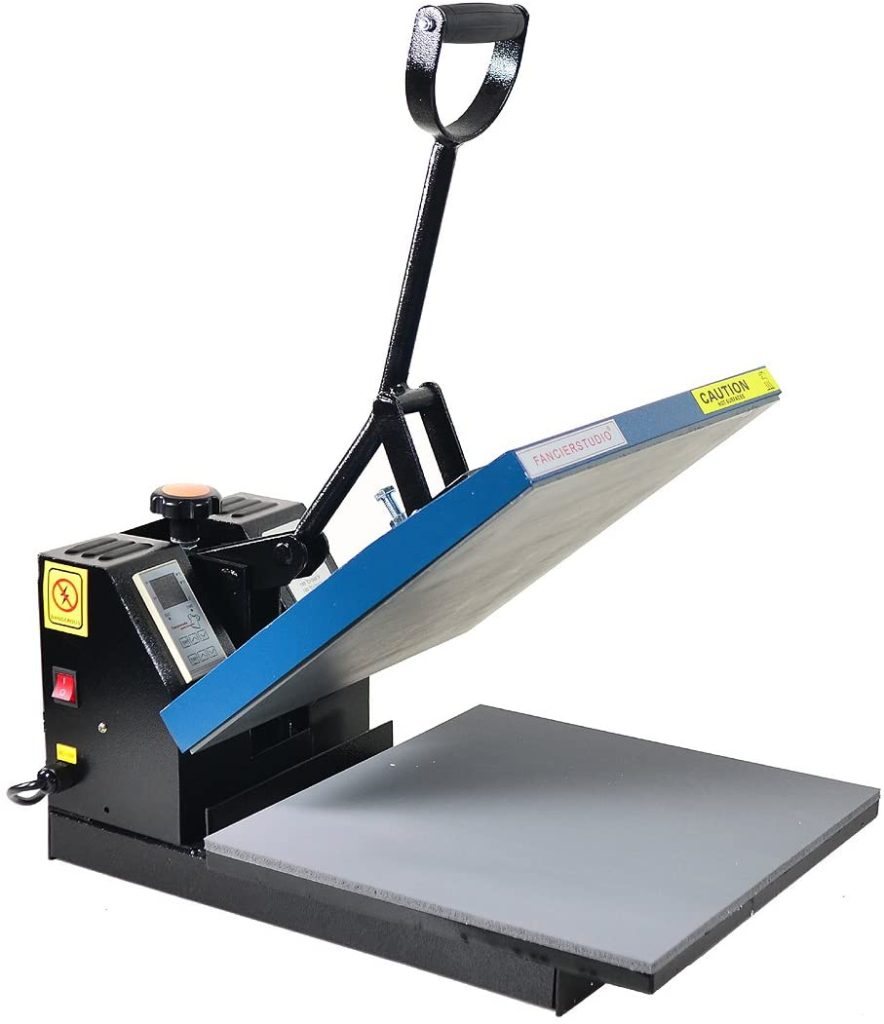
Use a heat press to transfer the dye from the paper to your sublimation blank. There are two primary types:
1. Swing-away heat presses have a top platen that may swing to the side, giving you more room to position your substrate.
2. Draw heat presses have a front-loading configuration, with the upper platen pulling out like a drawer.
Whatever style you want, seek for an 8-in-1 model with adjustable platens. This enables you to utilize the press for hats, mugs, plates, and other objects. Other major features include digital displays, timers, pressure adjustment, and removable hot plates for coatings.
To press your sublimation prints, follow these guidelines:
⇒ The optimal temperature range for most blanks is 380 – 420°F.
⇒ Time: 40 to 90 seconds for smaller things; 5+ minutes for larger objects such as boards.
⇒ Pressure: Medium to high pressure enables efficient transfer.
⇒ Coatings: Use nonstick sheets, such as parchment paper or Teflon.
⇒ Pre-pressing: A 30-second pre-press helps to remove moisture from the blanks.
You may obtain brilliant, lasting sublimation transfers by using a high-quality heat press and optimizing the press times for each substrate. Make care to perform test pushes first to dial in the optimal settings.
Tips For Better Quality and Troubleshooting:
Here are some helpful ideas for getting outstanding quality out of your converted Epson sublimation printer while avoiding problems:
⇒ Replace cartridges when ink levels are extremely low to avoid air drying up print heads.
⇒ Keep inks securely packed and shake before use to avoid sedimentation.
⇒ Use a high-quality sublimation paper, such as TexPrint XP HR. Poor paper can cause bleeding.
⇒ Print a nozzle check every month and clean the heads if there are any obstructions.
⇒ To maximum resolution, match the paper size to the print size rather than scaling down in the printer settings.
⇒ Print mirrored/reverse images to ensure the transfer reads appropriately when pushed.
⇒ Let printed sheets dry completely for
FAQ’S:
Yes, many consumer-grade inkjet printers, particularly Epson models, may be adapted to use sublimation inks. As long as the printer includes a permanent printhead and replaceable ink cartridges, it can most likely be converted.
Epson printers known for compatibility include the WorkForce WF models (WF-7710/7720), the Artisan series (1430), and the Stylus C88+. Newer XP models, like as the XP-830/860, also perform well when converted to sub dye inks.
Yes, you must print with specific sublimation inks, which comprise colors that are suited for gasification and adhering to polyester fibers and polymer coatings. Standard ink won’t work.
Sawgrass, Cosmos, and Cobra are the leading ink brands. Look for trusted vendors and purchase enough ink to cover your estimated monthly print output. Only use inks made exclusively for your printer model.
To mix the ink, violently shake the cartridges before installing them. Wipe away any ink or humidity on the cartridge printhead nozzle plates. Follow the ink priming and charging instructions. Reset chip counters for refillable carts.
Use high-quality sublimation paper, such as TexPrint XP HR, designed for dye sub inks. The paper must be coated to absorb ink, resist high temperatures, and release easily after pressing. Regular copy paper will not work.
Select the highest print quality and ink density. Disable the color correcting functions. Print to full bleed size. Use the matte media setting. Ensure that there are no scaling reductions. Double-check the page alignment.
You will need a commercial heat press that can reach at least 400°F. Swing-away and drawer types are widespread. You want pressure to be adjustable and the plates to be interchangeable. Nonstick sheets are needed.
In general, 380 to 420°F for 40 to 90 seconds at medium to high pressure is sufficient for many goods. Certain goods require certain settings that must be tested.
This is frequently the result of wrong time, temperature, or pressure. It could also be a product with a high moisture content, insufficient pre-pressing, or poor quality ink, paper, or blanks.
When not in use, leave it switched on to keep the circulation going. Print nozzle check pages biweekly. Clean the printhead gently as needed. Replace carts before they become entirely empty.
Yes, full-bleed printing is a significant advantage of sublimation over other transfer methods. Simply make sure your press plates are large enough to accommodate the full design.
Can you use regular printer for sublimation?
How to upload artwork to printer?
What is cricut sublimation printer?
Why my sublimation printer printing lines?
How to fix ghosting with sublimation printing?
Setting up sublimation printing business
Sublimation printing tutorials
